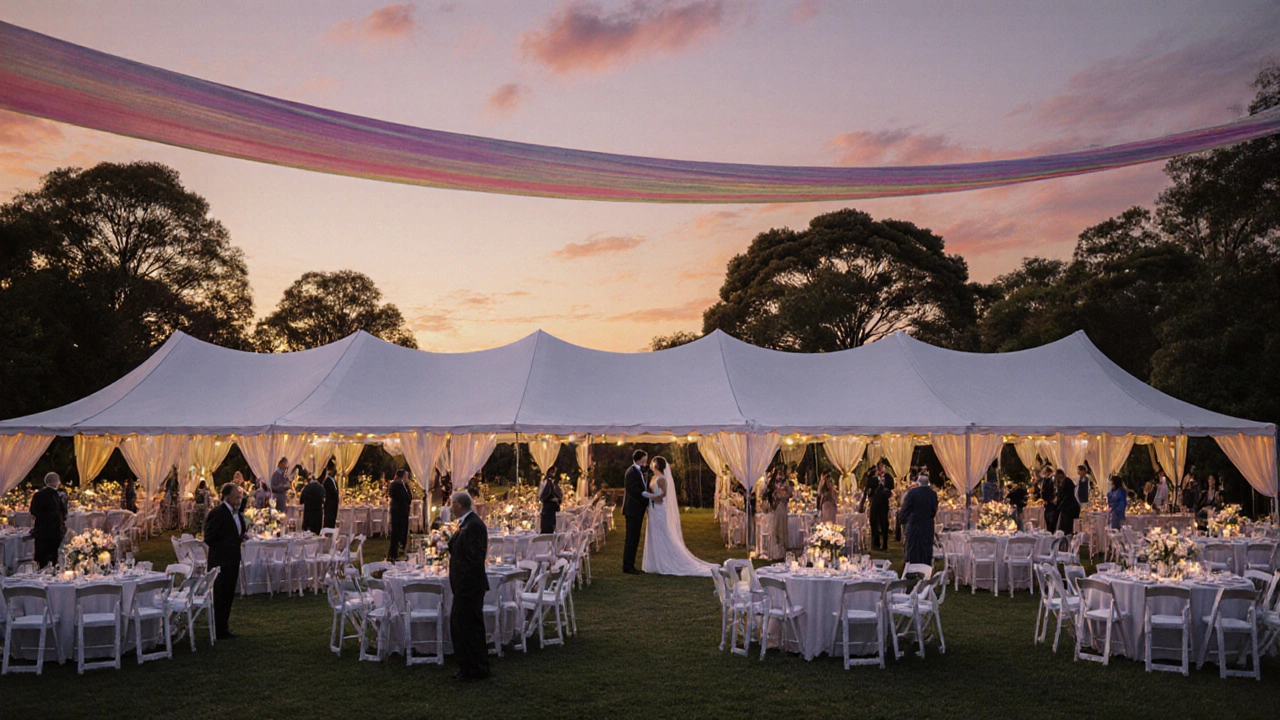Do Most Parents Pay for Their Kids' Weddings? A Deep Dive into Aussie Wedding Funding
 Oct, 22 2025
Oct, 22 2025
Wedding Funding Calculator
Australian Wedding Funding Calculator
Calculate how much to allocate to parents, the couple, and extended family based on Australian wedding trends and typical contribution percentages.
Australian Wedding Funding Trends
According to the Australian Wedding Industry Survey 2024, the average wedding costs $35,000. Typical contribution breakdown:
- Parents: 40-60% ($14,000-$21,000)
- Couple: 20-30% ($7,000-$10,500)
- Extended Family: 10-15% ($3,500-$5,250)
- Other: 5-10% ($1,750-$3,500)
When you hear the question "Do most parents pay for their kids' weddings?", the answer isn’t a simple yes or no. It depends on culture, family wealth, and the ever‑changing landscape of Australian wedding costs. In this guide we’ll break down who typically chips in, why traditions matter, and how couples can navigate the money talk without bruising relationships.
Understanding the Core Question
Parents paying for kids' weddings is a practice that varies widely across regions and generations. Historically, families covered most expenses, but today the financial burden is increasingly shared among the couple, extended relatives, and even third‑party services.
How Much Does a Wedding Cost in Australia?
Before you can decide who should pay, you need a realistic budget. According to the Australian Wedding Industry Survey 2024, the average wedding cost was $35,000, with a median of $30,000. Major cost drivers include venue hire (≈30% of total), catering (≈25%), and photography (≈12%).
Who Traditionally Pays?
- Bride's family has traditionally covered the ceremony and reception costs.
- Groom's family often handled the rehearsal dinner and entertainment.
- Extended relatives frequently contributed to specific items like wedding invitations or the honeymoon.
These norms are rooted in British‑Australian customs, but they’re shifting as couples seek financial independence.
Modern Funding Sources
Today, couples employ a blend of traditional and contemporary strategies. Below is a comparison of the most common funding sources in 2025.
| Source | Typical Contribution (%) | Advantages | Potential Drawbacks |
|---|---|---|---|
| Parents | 40‑60% | Reduces stress for the couple; honors tradition. | May strain family finances; expectations can clash. |
| Bride & Groom Savings | 20‑30% | Gives the couple control over choices. | Requires long‑term planning; may reduce honeymoon budget. |
| Extended Family Gifts | 10‑15% | Can cover high‑ticket items like a dress or band. | Unpredictable amounts; may feel like obligation. |
| Personal Loans / Credit | 5‑10% | Provides flexibility for larger venues or dates. | Interest costs; risk of debt if budget overruns. |

Factors Shaping Parental Contributions
Several variables influence whether parents end up footing the bill:
- Financial Capacity: Middle‑class families in Melbourne often have house equity to draw on, while younger families may rely on savings.
- Cultural Background: For many Asian‑Australian households, covering the entire wedding is a sign of respect. In contrast, many Anglo‑Australian families now expect a split.
- Age of the Couple: Younger couples (early 20s) are more likely to receive larger parental gifts compared with those marrying later when they’ve built careers.
- Wedding Size: A micro‑wedding (<100 guests) often costs far less, making it easier for parents to pay in full.
Managing the Money Conversation
Open dialogue prevents misunderstandings. Here’s a practical step‑by‑step approach:
- Set a budget cap together with the couple.
- Identify each party’s comfortable contribution level.
- Document expectations in a simple spreadsheet-this adds transparency.
- Discuss alternatives if the budget exceeds what anyone can afford, such as downsizing the venue or postponing the honeymoon.
- Agree on how to acknowledge contributions (e.g., thank‑you notes, public mentions).
Even though finances can be awkward, framing the talk as “planning for a shared celebration” keeps the tone positive.
Alternative Ways Parents Can Contribute Without Paying Directly
- Gift Registry Cash: Many couples set up cash‑registry funds, letting parents contribute without handing over a lump sum.
- In‑Kind Support: Offering a family home for pre‑wedding events, or providing catering staff, reduces overall expenses.
- Loan Assistance: A low‑interest family loan can be cheaper than a bank loan, but should be documented to avoid strain.
- Post‑Wedding Help: Paying for the honeymoon or a dream appliance can be a meaningful way to support the new household.

Real‑World Example: A Melbourne Couple’s Journey
Emily (28) and Jake (30) planned a spring wedding at the Royal Botanic Gardens. Their initial budget was $45,000. Here’s how they broke it down:
- Parents contributed $18,000 (40%): covered venue hire and catering.
- The couple saved $12,000 from their combined salaries.
- Grandparents gifted $5,000 specifically for photography.
- Emily’s aunt offered a discount on wedding flowers through her boutique.
- They took a modest $2,000 personal loan for the DJ.
By mapping each source, they avoided surprise debts and kept the celebration within their desired style.
When Parents Can’t Pay-What Next?
If parents are unable or unwilling to fund the event, couples have several options:
- Resize the guest list to reduce venue and catering costs.
- Shift the date to an off‑peak season-prices can drop 20‑30%.
- Consider a destination wedding with fewer guests, which can be cheaper overall.
- Crowd‑source contributions via a wedding website (transparent opt‑in, no pressure).
Remember, the goal is to start a marriage on a solid financial footing, not to accumulate debt from day one.
Key Takeaways (Quick Summary)
- In Australia, about 45‑55% of wedding costs still come from parents, but the share is dropping.
- Financial capacity, cultural expectations, and wedding size are the biggest determinants.
- Open budgeting conversations and clear documentation prevent friction.
- Alternative contributions (cash registries, in‑kind help) let parents support without large cash outlays.
- If parental aid isn’t possible, scaling back or creative funding methods keep the day beautiful and debt‑free.
Do most Australian parents still pay for their children’s weddings?
Yes, roughly half of wedding expenses are still covered by parents, especially for larger ceremonies. However, younger couples are increasingly sharing costs with their own savings.
What are the most common alternatives if parents can’t fund the wedding?
Couples can downsize the guest list, choose an off‑peak date, opt for a destination wedding with fewer attendees, or use a cash‑registry to let friends and extended family pitch in.
How does culture affect who pays?
In many Asian‑Australian families, it’s customary for parents to cover the full cost. Anglo‑Australian families often split costs, with the couple taking a larger share.
Is taking a personal loan for a wedding smart?
A loan can provide flexibility, but interest adds to the total cost. It’s safest when the loan amount is modest (<10% of the budget) and the couple has a clear repayment plan.
How can couples keep the conversation about money respectful?
Start with a shared budget, be transparent about expectations, and use a simple spreadsheet. Frame discussions around celebrating together rather than assigning blame.